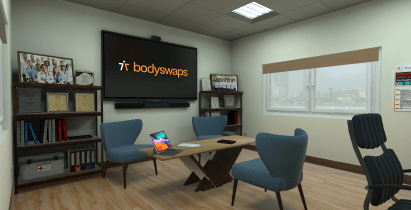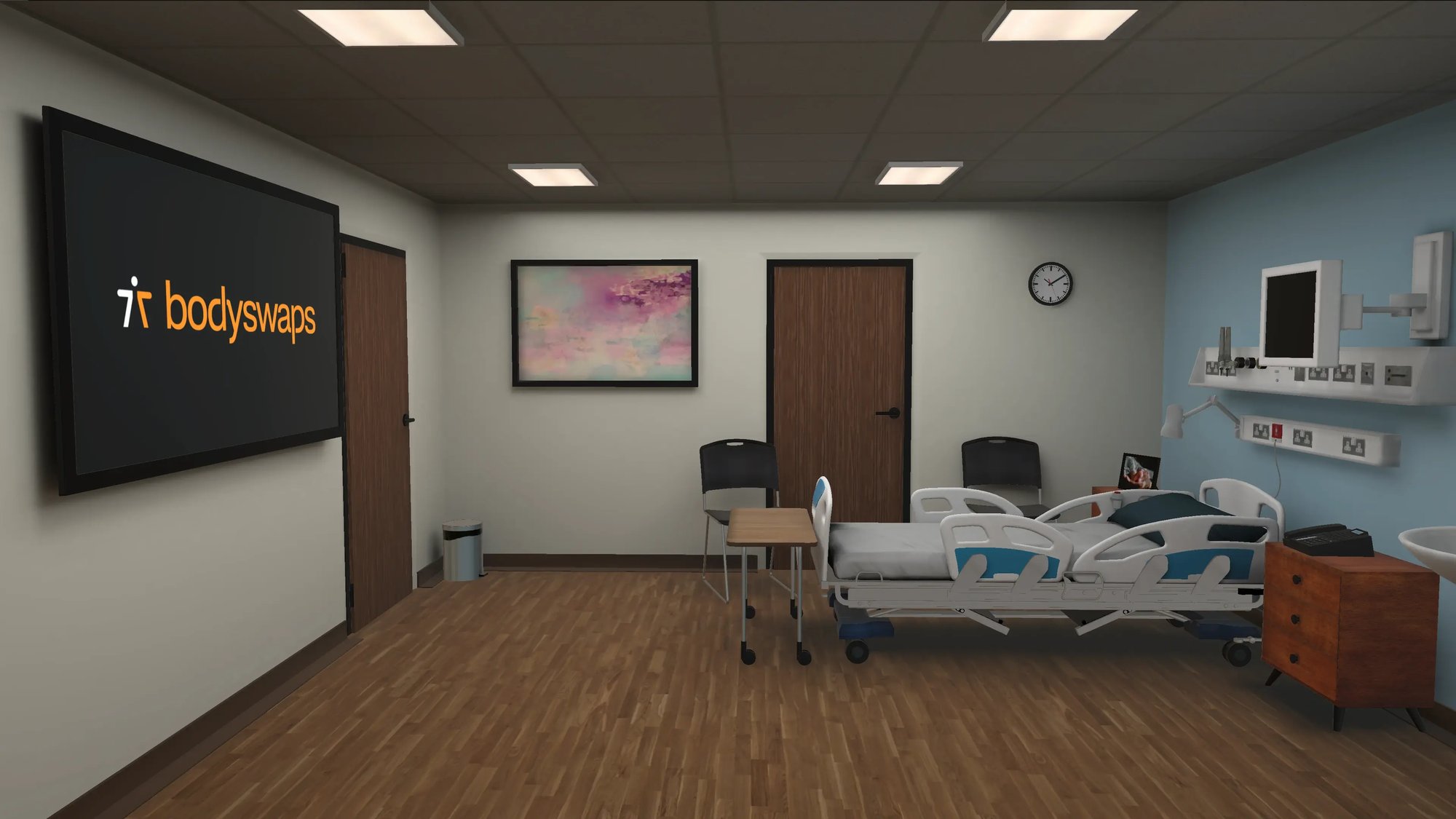TeamSTEPPS® toolkit: Call-out
Tutor notes
No one in healthcare works alone. Whether the day’s job is routine patient care or a high-stakes operation, healthcare providers all work as part of a team – and it’s critical that everyone in their team can collaborate effectively.
The TeamSTEPPS® technique Call-Out gives nurses a practical strategy for increasing their situational awareness and that of those around them. More effective collaboration means better patient outcomes.
In this interactive module, learners discover what makes a good Call-Out and how to put it into practice. Their virtual coaches will help them explore their instinctive approach to collaboration in an acute care situation and how they can improve it with Call-Out. Then, they challenge the learner to spot good and bad uses of Call-Outs in action. Finally, they’ll get a chance to practice giving Call-Outs and coordinating actions in a virtual nursing team, preparing them to use the technique in their working lives.
About this resource
Key learner outcome and goals
Learning outcome
Feel confident in using Call-Out to collaborate within a patient care team.
Learning goals
- Discover how Call-Out helps patient care teams collaborate
- Identify effective and ineffective Call-Outs in action
- Practice delivering Call-Outs yourself
A word about terminology
As a medium, Virtual Reality is not best suited to didactic teaching methods.
However, our intention is that all Bodyswaps modules follow a student-centered constructivist pedagogy. This means creating rich experiences in which learners can explore key concepts and ideas and reach their own conclusions.
This is why our documents speak in terms of learning goals and outcomes, rather than measurable ‘learning objectives’ (a la Bloom’s Taxonomy) per se.
What is TeamSTEPPS®?
TeamSTEPPSⓇ – Team Strategies and Tools to Enhance Performance and Patient Safety 3.0 – is an industry-recognized, evidence-based collection of teamwork tools and techniques. It’s designed to optimize collaboration between healthcare staff and improve the delivery of care.
The framework helps to develop four key skills (communication, leadership, situation monitoring, and mutual support), equipping staff to handle industry-wide interprofessional challenges.
This module gives learners a safe space to learn and practice a key communication skill from the TeamSTEPPSⓇ framework: Call-Out.
We worked with subject matter expert Sam Smith – Certified Registered Nurse Anesthetist and TeamSTEPPSⓇ master trainer (completed training 3.0) – to ensure the medical scenarios and application of the technique in this module are realistic and engaging.
TeamSTEPPS® Simulator
Our TeamSTEPPS® Simulator module provides an opportunity for learners to practice five key tools (SBAR, Check-Back, CUS, Task Assistance, and Call-Out) in a series of interactive, true-to-life freeform activities. It’s a virtual roleplaying space where nurses can gain essential experience and build confidence in using the tools.
But nurses have varying levels of preparedness in these tools, and may not be ready to put their skills to the test.
For that reason, we’ve designed a collection of short modules – our TeamSTEPPS® Toolkit – which act as a companion to the Simulator. The modules in the Toolkit allow nurses to explore the theory behind these five techniques, providing scaffolded learning and practice before or after they enter the TeamSTEPPS® Simulator. This module takes a closer look at Call-Out.
Aside from a playground in which nurses can hone their skills, the TeamSTEPPS® Simulator can also be used as a competency test for assessing performance before and after enrollment in the TeamSTEPPS® Toolkit modules. All learners who play the Simulator receive an LLM-powered personalized report of their overall use of the tools, helping you understand where they excel and where they may need further training and practice.
Module structure
The complete journey takes the learner through three interactive topics, as well as ancillary activities such as introduction, self-reflection, debrief and the exit survey.
It is a linear experience, meaning the learner will be guided step by step through all the activities by the virtual coaches.
We recommend that learners fully interact with each activity to get the full benefit.
It is estimated that each topic will take the learner approximately 5 minutes to complete, although completion times vary depending on how many attempts the learner takes to complete each conversation exchange in Topic 3.
Learner journey
.svg)
.svg)
.svg)
.svg)
.svg)
.svg)
Characters
Nurse Carlos
Virtual coach
Nurse Tala
Registered nurseNurse Peter
Registered nurseNurse Kayla
Registered nurseNurse Zac
Registered nurse
Dorian
Concerned parent
Ruby
Unwell childDr. Grace
Attending physicianEnvironments

Hospital tutor room

Private patient room
Purpose
Location
Characters
N/A
Journal
Duration
1:00
The first time learners use Bodyswaps, an onboarding sequence familiarizes them with the features of the app, takes them through an avatar selection and embodiment activity, and prepares them for the experience to come.
In the onboarding, learners will:
- Find out how this training is different from the rest
- Select their avatar
- Discover their virtual journal
- Learn how to navigate and use the tools and settings
Purpose
Introduce the module and reflect on current confidence levels
Location
Characters
Journal
Duration
The module begins with the learner meeting their virtual coaches, Nurse Sam and Nurse Carlos, in the tutor room at Summerview Hospital. The two of them start by discussing the difficulties of being a situational leader – that is, the person best placed to respond to a situation in the moment – and how good collaboration is critical to meeting that challenge. Along the way, Carlos shares an anecdote from his last shift, helping the learner to connect with the coaches and prompting them to reflect on similar experiences they may have had.
Now that they’ve set up the problem, the coaches reveal how to solve it: using the Call-Out technique. Call-Out provides a structure for both calling out information that the team needs to hear and taking in information from other team members.
Before the learner begins exploring Call-Out, Sam and Carlos invite them to complete a short, Likert-type self-reflection survey, to indicate how confident they feel about the following key learning points:
- Understanding how Call-Out helps teams collaborate
- Identifying effective and ineffective Call-Outs
- Formulating effective Call-Outs yourself
These self-reflection questions are repeated in the debrief at the end, to assess how the learner’s confidence levels have changed.
Purpose
Explore how team members can use Call-Out to improve collaboration
Location
Characters
Duration
TBD
In this evaluated conversation activity, coaches Sam and Carlos describe the situation Carlos was in during his last shift, pausing at each step to ask how the learner would respond and determine their natural approach to situational leadership and fostering team collaboration. They need to lead a team providing care to a hypoglycaemic patient.
Over the course of four multiple-choice questions, the learner must select the answer that best fits their instinctive response to the situation as it develops. Each question has three answers: Option A uses Call-Out to good effect; Option B shows an inclination toward vagueness and superfluous detail; Option C shows an inclination to prioritise speed and concision over necessary detail.
Once the learner selects an option, Sam and Carlos give feedback about how effectively that response fosters collaboration within their team. If it was an optimal A answer, they explain how the response fits into the Call-Out technique. If it was a weaker B or C answer, they offer suggestions about how the response could be improved using Call-Out. In either case, relevant information about that aspect of Call-Out is added to the learner’s journal.
In addition to this immediate feedback, Sam and Carlos give feedback at the end. Learners who leaned towards A answers are informed about how their responses tie in to Call-Out; those who leaned towards B or C answers are shown where they have room to grow.
Afterwards, the coaches provide four tips for integrating Call-Outs into their daily practice: directly assigning tasks or roles to team members; speaking clearly and enunciating; coupling Call-Outs with Check-Backs to verify information; and both calling out and listening for status updates on tasks being undertaken. They emphasise that together, these form a strategy for building up a shared mental model that allows the whole team to anticipate next steps and adapt to changes in a patient’s condition.
Purpose
Identify Call-Out principles and mistakes
Location
Characters
Nurse Sam, Nurse Carlos, Nurse Tala, Nurse Peter, Nurse Kayla, Nurse Zac
Journal
N/A
Duration
TBD
The topic begins in the hospital tutor room, where coaches Sam and Carlos explain that a few of the other nurses at Summerview Hospital are practicing their teamwork in a mock code scenario. They invite the learner to observe and consider how strong the Call-Outs and situational awareness on display are.
Next, the scene moves to a private patient room, where the learner watches Tala direct Peter, Kayla and Zac through a code scenario with a CPR training manikin. This dual category observation activity challenges the learner to identify moments where the team displays effective and ineffective usage of the Call-Out technique, and to press the left or right button accordingly. There are three of each category, but the learner has only eight presses in which to find all six, encouraging thoughtful rather than random clicking.
A correct press adds the item discovered to the screen visible in the background, along with a positive sound effect. Missed items are also added to the screen, but grayed out to differentiate them.
At the end of the scene, the learner can view a list of all the examples of effective and ineffective Call-Outs they caught and all those they missed. Selecting any item on the list replays the relevant part of the scene and shows a pop-up with further information about the behavior displayed, to deepen the learner’s understanding of why it was effective or ineffective.
When the learner is done reviewing, they return to the tutor room, where Sam and Carlos reflect on the difficulty of forming an effective Call-Out in the heat of the moment and suggest that the learner might now want to give it a try on their own.
Purpose
Practice delivering effective Call-Outs
Location
Characters
Ruby, Dorian, Nurse Peter, Nurse Kayla, Dr. Grace
Journal
N/A
Duration
TBD
Back in the private patient room, the learner finds Ruby, an unwell child with a high fever, and her concerned father, Dorian. Briefing the learner by text, Sam advises them to direct their team – which consists of Kayla and Peter – with effective Call-Outs in order to turn the situation around. Halfway through the activity, Dr. Grace turns up to take charge of the situation, so that the learner is tested on how they act as part of a team as well as its situational leader.
This scaffolded conversation activity plays out over five multiple-choice questions of three options each, which challenge the learner to apply everything they’ve learnt and pick the response that best follows the principles of effective Call-Outs. These principles are displayed on a computer monitor in the background, as a reminder, and each is ticked off as the learner meets them.
Different options get different responses from the others in the room – confusion among the nursing team if they choose poorly, effective care if they choose well. Adding to the intensity is Dorian, who grows increasingly worried about the delays if the learner picks an incorrect answer, but is reassured to see the nurses working well together if they choose a correct one. After the characters’ reactions play out in each exchange, the coaches text the learner with more detailed feedback about why the answer they selected was or was not the correct option.
The learner repeats each exchange until they succeed, so that by the end they will always have seen an example of how good Call-Out usage can improve a team’s collaboration.
Once all five exchanges have been completed, the learner sees a brief closing scene where Dorian thanks them and Dr. Grace for helping Ruby, and Dr. Grace reflects on the strength of the nursing team behind her.
Purpose
Debrief the learner upon completion of the training and prompt self-reflection
Location
Hospital tutor room
Characters
Journal
N/A
Duration
TBD
Back in the hospital tutor room, coaches Sam and Carlos congratulate the learner on their good work in the preceding activity. They summarise the key strengths of the responses the learner gave: strong situational awareness, clear directions, verifying information and proactively giving status updates.
In closing, they remind the learner that they don’t need to wait for an emergency to put what they’ve learned into practice, as Call-Out can boost their collaboration in all kinds of situations. Finally, they invite the learner to complete the same short survey as they did at the start, to see how their confidence levels have changed.
Purpose
Assess the effectiveness of the training itself
Location
N/A
Characters
N/A
Journal
N/A
Duration
1:00
Before the learner leaves the module, they are asked to complete a short survey about their experience.
This data helps us to assess the effectiveness of our product and identify any areas that need improvement. Clients also find it beneficial when assessing ROI.
They are asked to mark whether they agree or disagree with the following statements, on a 10 point scale:
- I would recommend this experience to others.
- The experience helped me identify how to improve my communication skills during a patient emergency.
- I now have a better understanding of how to use the TeamSTEPPS® tool Call-Out to collaborate during a patient emergency.
